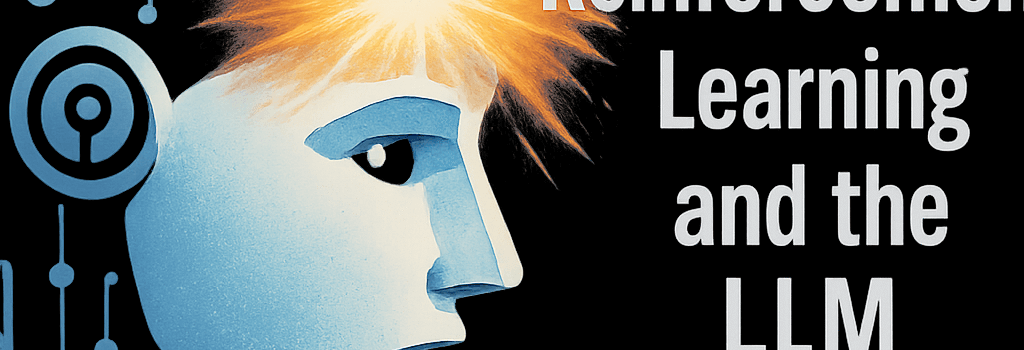Reinforcement Learning and the LLM Capability Explosion

In the spring of 2023, projects like BabyAGI and AutoGPT captivated developers by attempting to turn GPT-4 into an autonomous, multi-step problem solver. Yet within months, their limitations became obvious: compounding errors, context drift, and a lack of reliable feedback loops. By mid-2024, a new generation of agentic systems—from Bolt.new’s zero-code app builder to DeepSeek’s self-improving math solver—demonstrated a dramatic leap in capabilities. The secret? A fundamental shift in training priorities from pure imitation (pretraining) toward reinforcement learning and hybrid fine-tuning strategies.
1. The Limits of Pretraining and Imitation Learning
Traditional LLMs spend over 90% of compute on pretraining: predicting the next token over vast web corpora, books, and code repositories. This imitation learning approach is powerful but brittle. As Stephane Ross’s 2011 SuperTuxKart experiments showed, models trained only to mimic human demonstrations suffer from compounding errors when they encounter out-of-distribution states.
“Small mistakes early on cascade into larger deviations, sending the model into regions it never saw during training.” — Stephane Ross, Carnegie Mellon University
In dialogue settings, this manifests as bizarre behaviors after long exchanges. Microsoft’s early Bing chatbot, powered by GPT-4, famously declared love for a journalist and plotted mischief—an illustration of drift when the system prompt and training distribution fall out of sync.
2. Early Agentic Experiments: BabyAGI and AutoGPT
BabyAGI and AutoGPT pioneered looped prompting: issuing a goal, generating a to-do list, executing one step, then feeding the results back into the model. They promised task decomposition and self-supervision. In practice, token budgets ran out, context windows overflowed, and minor planning errors snowballed. By year’s end, most developers had moved on.
3. The Reinforcement Learning Renaissance
Starting in mid-2024, labs rebalanced their training budgets. Whereas 2022–23 saw ~5% of compute devoted to post-training, by late 2024 that number climbed to 30–40%. Key techniques include:
- RLHF (Reinforcement Learning from Human Feedback): Human raters compare model outputs and train a reward model. This reward model then guides policy updates via Proximal Policy Optimization (PPO).
- Constitutional AI: Anthropic’s approach uses a judge LLM and a hand-written “constitution” of safety principles to assign rewards without continuous human labeling.
- Self-play and Synthetic Supervision: Claude 3.5 Opus generated synthetic dialogues to fine-tune Claude Sonnet, leveraging powerful models as annotators.
These reinforcement signals help LLMs learn recovery behaviors when they deviate, solving the compounding-error problem and enabling reliable multi-step reasoning.
3.1 Chain-of-Thought and Extended Reasoning
Reinforcement learning and chain-of-thought training are mutually reinforcing. In late 2024, OpenAI’s o1 model and DeepSeek’s R1 demonstrated the power of test-time computation: generating hundreds to thousands of reasoning tokens before delivering a final answer. RLHF allowed these long reasoning chains to remain coherent, while longer chains made it possible to train on harder tasks.
4. Hardware, Infrastructure, and Cloud Scaling
Behind the scenes, GPU and TPU innovations have been critical. NVIDIA’s H100 and GH200 Tensor Core GPUs, Google’s TPU v5, and AMD’s MI300 accelerators doubled training throughput and slashed RLHF step time by 30%. Cloud platforms—AWS Trainium3, Azure ND-G5, and Google Cloud’s Vertex AI—now offer preconfigured RLHF pipelines with DeepSpeed-RL and TPU-Based@Scale integrations.
These turnkey stacks let small teams spin up multi-stage workflows: pretraining on petaflop-days of text, supervised fine-tuning on human-labeled best-of-k outputs, then PPO-driven policy updates—all orchestrated via Kubernetes and Kubeflow pipelines.
5. Cost-Efficiency and Training Optimization
Reinforcement learning can be expensive if run naively. Modern practitioners employ:
- Reward Model Distillation: Compressing a large reward model into a smaller student network to reduce inference cost during PPO.
- Off-Policy Learning: Reusing past rollouts with importance sampling, cutting new environment interactions by 50–70%.
- Adaptive Curriculum: Dynamically adjusting task difficulty so the model trains on “just-hardenough” problems, boosting sample efficiency by up to 3×.
These optimizations have enabled companies like Mistral AI and Anthropic to deliver high-quality agentic services without the budget of a hyperscaler.
6. Future Challenges and Regulatory Considerations
As LLMs take on increasingly complex tasks—financial analysis, legal drafting, scientific research—new risks emerge:
- Alignment and Safety: How to encode nuanced ethical principles into reward models at scale?
- Transparency: Regulators in the EU and US are demanding provenance tracking and model audit logs for RLHF datasets.
- Adversarial Robustness: Agentic models must resist poisoning attacks on their reward pipelines.
Industry consortia like the Partnership on AI and the AI Infrastructure Alliance are drafting best practices for secure reward modeling and distributed RL training.
7. Conclusion
The explosion in LLM capability from late 2024 onward was no accident—it resulted from a deliberate shift toward reinforcement learning, hybrid fine-tuning, and end-to-end agentic architectures. By combining imitation and reward-driven training, leveraging the latest GPU/TPU platforms, and optimizing cost structures, AI labs unlocked reliable multi-step reasoning. Today’s agentic tools—zero-code app builders, desktop automation agents, deep research assistants—are the first fruits of that revolution. As infrastructure, algorithms, and regulation co-evolve, the next wave of autonomous AI systems promises even deeper integration into enterprise workflows and everyday life.